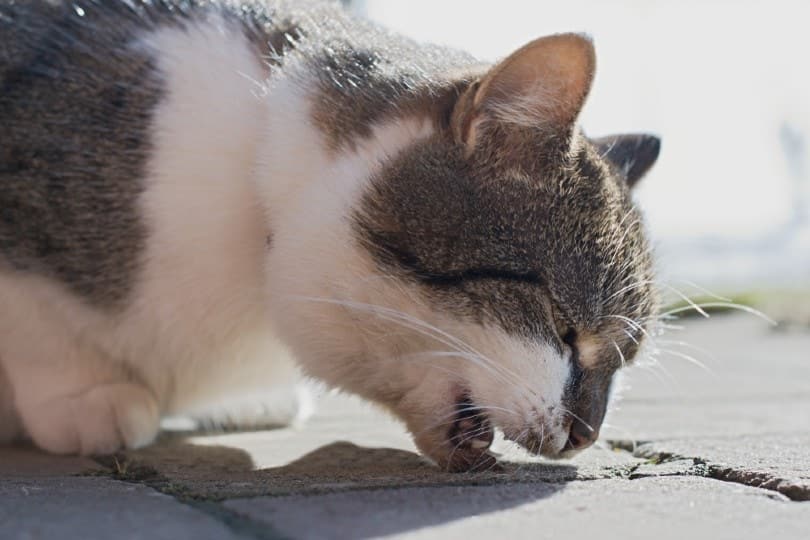Octopus is considered a delicacy around the world, and you might find yourself wondering if it’s okay to give your cat a piece. After all, we associate cats with seafood, so is safe for them?
Octopus is indeed safe for cats to eat, but only if it’s fresh, well-cooked, and in a small amount as an occasional treat.
We’ll take a closer look at the benefits of your cat eating octopus and what can happen if they eat it when it’s not prepared correctly. We hope this will ease your mind when you’re enjoying your next octopus treat.
A Little Bit About the Octopus
The octopus is a boneless mollusk in the cephalopod class that is famous for having eight arms and squirting ink when avoiding predators. They have blue blood and three hearts and can change colors to blend in with their surroundings, like a chameleon.
Octopi have gotten more attention recently due to their intelligence and ability to use tools. They are also culinary delicacies, particularly in certain parts of the world, such as Japan, Korea, and the Mediterranean.
Octopus is an excellent source of protein, copper, iron, omega-3, vitamin B12, and selenium. It can provide various health benefits for humans, including the following:
- Has antiviral and anticancer properties
- Helps with depression
- Aids in lowering blood pressure and contributes to a healthy heart
- Can help with cognitive health
However, there are ethical and environmental issues around eating octopus, particularly with dishes that require eating them alive.

Cats and Octopus
The most important thing you can do is ensure that the octopus you feed your cat is fresh and prepared correctly. Cooking it is an integral part of the process.
Cooked Octopus
Many marine species contain vibrio bacteria, which can lead to vibriosis, a lethal form of food poisoning or skin infection. Additionally, there’s the risk of food poisoning due to salmonella and E. coli.
This should convince you of the importance of only giving cooked octopus to your cat. Any meat or seafood you feed your cat should be fully cooked.

Heavy Metal Toxicity
Seafood can contain heavy metals, including mercury. Unfortunately, octopi are prone to having high levels of lead, which is too much even for humans if excessive amounts of octopus are eaten every week. Octopi are carnivores and ingest heavy metals through their prey, such as crabs, clams, and mollusks.
Allergies
Some cats are prone to seafood allergies, which typically are the third most common allergy, behind beef and dairy. If your cat happens to be sensitive to food, look out for an allergic reaction when your cat eats anything new:
- Skin issues (itchiness)
- Allergic shock
- Stomach upset
- Hives
- Facial swelling
The truth is that cats originated as desert-dwellers and weren’t fish eaters. As much as cats seem to enjoy seafood, they were never really meant to eat it in the first place.
Preparing Octopus for Cats
If you serve octopus to your cat, keep in mind that you’ll need to take a few steps to ensure their health and safety.
- Always Cooked: Regardless if it’s chicken, fish, or octopus, always cook food before giving it to your cat. Raw fish or meat can be full of bacteria that can cause serious health conditions. It can even be fatal. So it’s always best to cook it.
- Small Amounts: You should only give your cat a small amount of octopus as an occasional treat. It should not become a regular part of the diet. It is safe for your cat, but only in small amounts. It also doesn’t provide a balanced diet on its own, so there is no benefit to feeding it regularly.
- No Seasonings: Some cook seafood with seasonings, butter, garlic, and onions. You cannot feed your cat any onions or garlic since they are toxic to them! Also, giving your cat too many treats designed for humans can lead to diabetes, stomach upset, and obesity, so avoid giving your cat too much “people” food. The octopus should be fed plain to your cat, so consider boiling or grilling instead of frying.
- Only High Quality: You should only purchase ethically and organically sourced octopus. If the octopus is cheap, it’s probably cheap for a reason and could potentially be high in heavy metals or past its prime.
- Small Pieces: The suckers on the octopus’s tentacles can become stuck in your cat’s throat and cause them to choke, so make sure you only give them very small pieces.

Can Kittens Have Octopus?
The short answer is no. The same issues that affect adult cats can be much more serious for kittens. They still have developing digestive and immune systems, and any bacteria or heavy metals will make a kitten sick and can be fatal.
Just stick with food that is appropriate for kittens, and don’t give them people food until they have matured.
Conclusion
As long as your kitty isn’t allergic to octopus and you’ve correctly prepared it, there’s no harm in giving them an occasional piece as a tasty treat. However, it’s possible your cat won’t want to eat any in the first place.
When you give your cat people food, including octopus, keep an eye on them to make sure they don’t have any adverse effects from it. Also, speak to your vet about any concerns or questions about your kitty’s diet, especially if you’re thinking of adding something new to their meals.
See Also:














